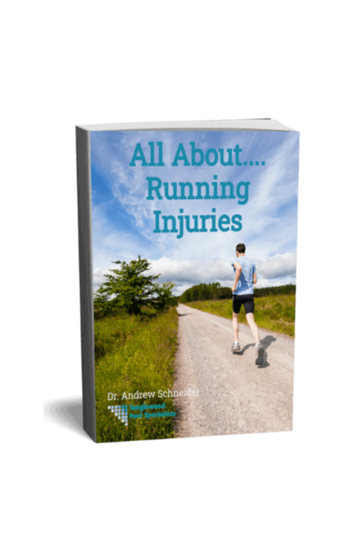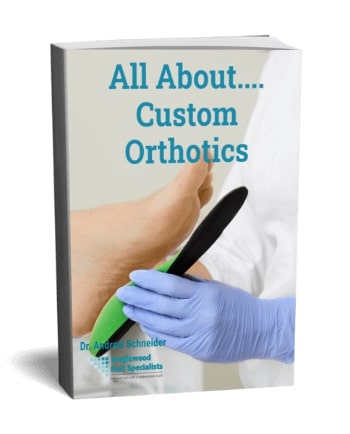Learning how to pick running shoes that work for you is important. Running in sneakers that fit your foot type can help you train. Plus, it can prevent injury. In fact, this subject is so important that our podiatrist in Houston, Dr. Andrew Schneider, created an entire video series on the topic. (Find it here on our YouTube channel, with other videos discussing specific shoe brands. Styles covered include Newton, Altra, Zero Drop and Hoka shoes.)
You see, there's not one "perfect" running shoe that works for every runner. Instead, you may have a type of sneaker that will best support your feet. (That could mean a traditional shoe, or a specialized sneaker designed for specific foot types. These include high arches, low arches and many shapes between.)
With all these options, finding the best running shoe for your needs is a process. In fact, it's so complex, you may prefer to come into the office for help. There, we can help narrow down choices with a physical exam and a gait analysis. We can also let you know if you'll need custom orthotics in your sneakers to prevent injuries. In other words, we can't give one answer to the question of how to pick running shoes. But we CAN explain how you can tell if you're running in the wrong ones. And we'll do that right now!
How to Pick Running Shoes: Learn Signs You're in the Wrong Ones! ![Woman holding heel in pain while wearing sneakers]()
As we mentioned earlier, some people prefer to run in traditional running sneakers, and that will work for some people. But every body has a different foot. And your biomechanics (the way your tendons, muscles and ligaments move together) are also unique. So not everyone can wear a so-called typical sneakers. How can you tell if your sneakers aren't right for your body type? Don't worry, your body will let you know. Here are the signs to watch for.
Wearing the Wrong Running Shoes: Signs and Symptoms
The most obvious sign you've picked the wrong sneaker is foot pain. But, sometimes, the pain pops up elsewhere. Wearing the wrong running shoes can also cause:
- Ankle and knee pain
- Shin splints
- Calluses and blisters
- Numb or tingling feet
- Feet that feel heavy or tired before your body is exhausted from the run.
At first, these symptoms may be temporary. In fact, they'll probably go away once you stop running and take off your shoes. But over time, running in the wrong shoes can leave you with more permanent problems. And that's why it's important to pick running shoes that work for you, while tossing ones that don't.
Physical Signs You're Running in the Wrong Sneakers
Here's your body's way of telling you that you're training in the wrong kicks.
1. You have pain when you run.
Whether you notice a dull, achy pain or sharp stabs, foot pain when you run means your sneakers aren't properly supporting your feet. Over time, this will increase your risk for injuries such as stress fractures.
2. Your balance is off.
Are you tripping or feeling imbalanced when you train? These are both signs that you haven't nailed the art of how to pick running shoes that work for your body.
3. Your feet go numb or tingly.
Do your feet go numb, or start tingling, during your runs or right after you're done? The cause could be ill-fitted sneakers that press on your nerves or reduce blood flow to your feet. So if you keep running in these kicks, you might end up with permanent nerve damage.
4. Those arches are rebelling.
Training in shoes that don't support your arch type can lead to arch pain and plantar fasciitis. Notice either of these, and switching out your sneakers could be the answer to your prayers.
5. Your toenails are talking back.
Whether you're wearing the wrong shoe size, or your sneakers just aren't fitting properly, your toenail may let you know by turning purple, black, or even falling off. Now, it's important to note that sometimes, simply changing up your lacing technique could prevent your toenails from trauma.
Running in Wrong Sneakers: Signs on the Shoes ![pair of Nike sneakers]()
Even if your body doesn't hurt, carefully examining your sneakers could tell you that you've picked out the wrong pair. Here's what to look for:
1. Uneven or unusual wear patterns
The soles of your sneakers can reveal that you've picked the wrong pair of shoes. If you have medial wear on your soles, the spots beneath your heel and the inner area of the ball of your foot will show more degradation. That suggests you're overpronating, meaning your foot rolls inward when you move. In some cases, you may be able to solve this issue with different running shoes. But, more often, you'll need custom orthotics to correct pronation.
Now, if your shoes show more wear on the sole's outer edges, we call this a lateral pattern. That suggests your feet don't roll inward enough. (Underpronating or supinating are terms that describe this walking pattern.) Left alone, you can injure your joints or sustain a stress fracture with supination. Here, again, you'll likely need orthotics to current the gait pattern.
Finally, if you notice even wear across the sole of your running shoes, that's good news! It means that you're evenly spreading your body weight across your foot. (And across your shoe.) As such, you're less likely to get an overuse injury. Now, uneven shoe wear can suggest that your sneakers aren't giving you enough support. Or they can tell you that your body is out of alignment, and you need additional support beyond your sneakers to get back on track. Still, as we reviewed before, shoe wear isn't the only sign that you're in the wrong running shoe. And that's why you need to listen to your body and watch your sneakers.
How to Pick Running Shoes: Final Thoughts
Here at our podiatry practice in Houston, we have one rule about running shoes. (And all shoes.) They should feel comfortable the first time you try them on, as well as every time after that. Beyond comfort, every foot needs slightly different features in order to find that perfect support during runs. So, to find the pick running shoes that work for your feet, come into the office and we'll help you make the right decision!





















